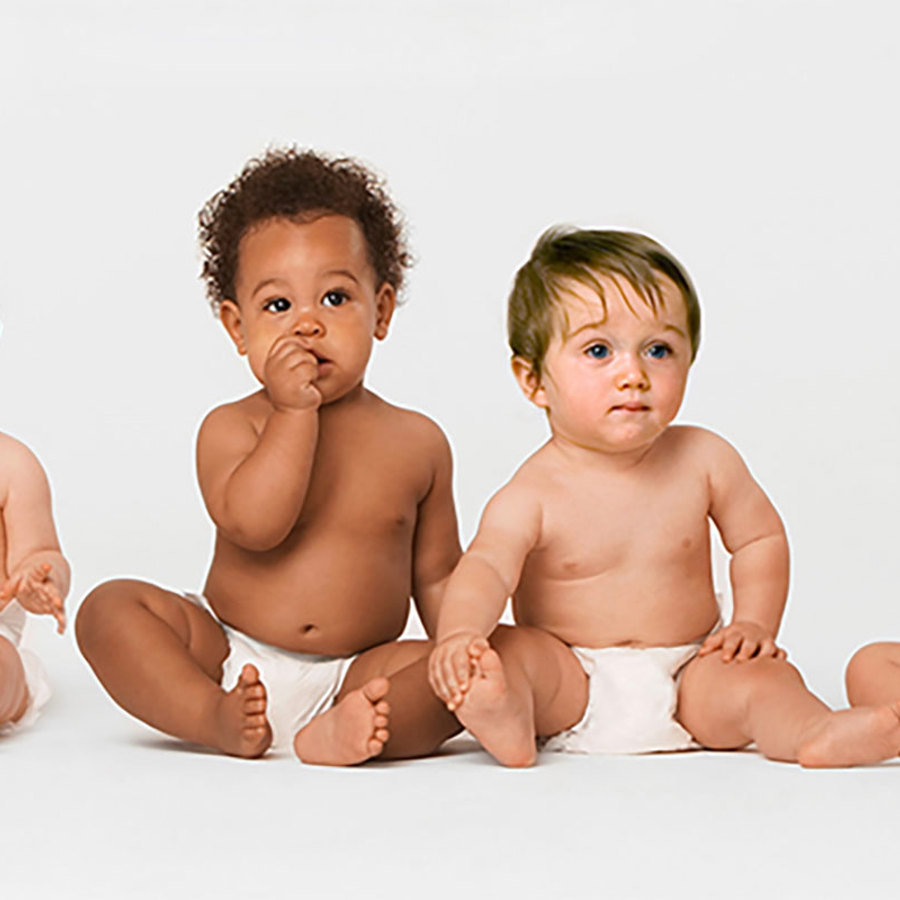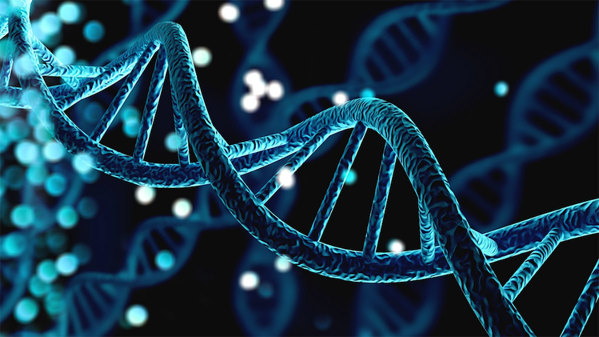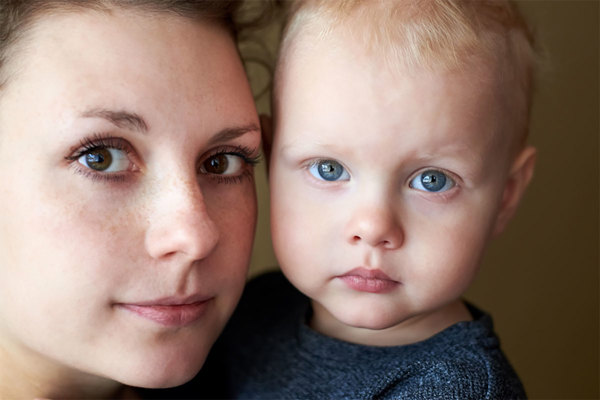
Is it possible to predict what color eyes my child will have?

- Related Topics:
- Common questions,
- Eye color,
- Complex traits,
- Pigmentation traits
Many parents from around the world ask:
“Is it possible to predict what color eyes my child will have?”
On the surface, this may seem like an easy enough question to answer. For many years, scientists have thought that eye color could be perfectly predicted by understanding the eye colors in their family. Babies typically look like their parents, right? So if both parents have brown eyes, won’t the baby’s eyes also be brown? But we now know that this isn’t 100% true. As with most things in science, it’s a bit more complicated than we originally thought!
To give you the short answer right up front: we unfortunately can’t perfectly predict what eye color a baby will have (at least not right now!). While you could make an educated guess based on the parents’ eye color, there really isn’t a way to know for sure. There are just too many different factors that influence eye color!
Still, if you’re up for hearing about the long answer to this question, then there’s a lot more to learn about how eye color works! Onwards, time for a science lesson!
Getting started with eye color genetics
For starters, we need to introduce a very important three-letter word you may have heard before… DNA! DNA (or DeoxyriboNucleic Acid for long) contains the instructions our bodies need to develop and grow. It also has instructions for many traits and physical characteristics we have… like eye color!
Another word you might be familiar with is gene. Genes are just little chunks of DNA that contain information to do specific things.

Scientists have discovered some specific genes that play an important role in eye color. One such gene is OCA2. This gene is involved in making melanin, the brown pigment that is found in eyes, hair, and skin.
There are several different versions of the OCA2 gene (or alleles). Depending on which version a person has, they might have more or less brown pigment in their eyes. And which version a person has can be passed down and inherited by their children.
Still, we know that the OCA2 gene is not the only piece of the eye color puzzle. Other genes associated with eye color include HERC2, ASIP, TPCN2, TYR, TYRP1, SLC24A4, SLC24A5, and SLC45A2… just to name a few. All of these genes come in different versions, affecting eye color in a variety of different ways. With all these genes in mind, you might already see why predicting a baby’s eye color is more complicated than just making a simple guess!
Twice the complexity
But pay attention, because this is where things get even trickier! We all actually have two copies of each gene, one from each parent. And since genes can come in different versions (alleles!), the two you inherit could be very different from one another. So someone may have one allele that makes brown eyes and one allele that makes blue eyes. What happens then?
Two alleles can interact in a variety of ways. Some alleles are dominant and can overpower anything else. You’ll see a dominant allele’s effect no matter what the second copy is. Other alleles are recessive and will only be seen if there aren’t any dominant alleles next to them. Further still, there are even more ways alleles can interact, but we won’t get into that here!
In the case of eye color, alleles for darker colors are usually dominant. That means that if you have DNA for both brown and blue eyes, you’ll probably have brown eyes. The DNA for blue eyes would be recessive and hidden.
Congratulations! You now have a good understanding of classical genetics (or Mendelian genetics)! Scientists use this understanding of dominant and recessive traits to help us better understand how genes interact and are passed down to children.
This is how most eye color predictions are done. They usually simplify eye color to one or two genes and then try to explain all the colors in a particular family. And while this can be great for making an educated guess, it won’t work for all families.

But wait there’s more!
Now let's keep upping the complexity, because there are more eye colors than just blue or brown! You yourself, or someone you know, may have green, hazel, or even pink eyes. So how do these colors fit into our puzzle?
As we mentioned, eye color is affected by more than just one or two alleles on a single gene. In reality, eye color is affected by dozens of genes! That makes it a polygenic trait. And since scientists keep discovering more and more genes that affect eye color, it’s likely that we still don’t know the full picture.
But eye color isn’t just affected by your genes. It’s also influenced by environmental factors, especially during the early years of a baby’s development. That includes exposure to sunlight, access to food, stress, and even exposure to certain viruses (like herpes). Eye color can also be affected by certain genetic conditions like Down syndrome or albinism.
When you put all of that together, you can start to see why predicting eye color is surprisingly complicated.
Alas, we’ve reached the end of our scientific odyssey into eye color! Now you know that eye color prediction is not quite as simple as it's often made out to be… and even more importantly, you understand why. If you’re still hungry for more information about eye color and the science behind it, be sure to check out some of the resources I’ll leave below!
Read More:
More from Ask-a-Geneticist:
- Is anything known about the genetics of eye color beyond brown, blue, or green? Like amber?
- How could an eye color prediction from a genetic test be wrong?
- How can two brown-haired parents have a blond child?
- How is it possible that my earlobes are free when both my parents’ are attached?
Other Interwebs resources:
- Medline: Is eye color determined by genetics?

Author: Ben Esmaili
When this answer was published in 2023, Ben was a M.S. candidate in the Stanford University School of Medicine, studying Human Genetics and Genetic Counseling. Ben wrote this answer while participating in the Stanford at The Tech program.
 Skip Navigation
Skip Navigation
